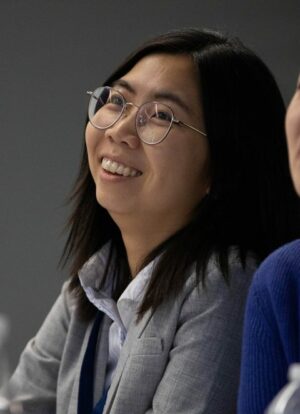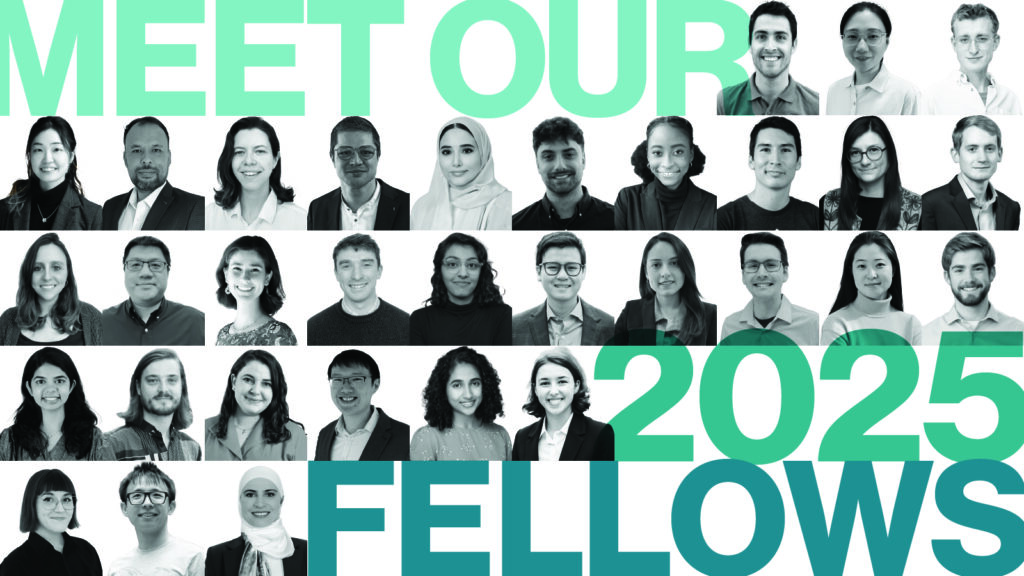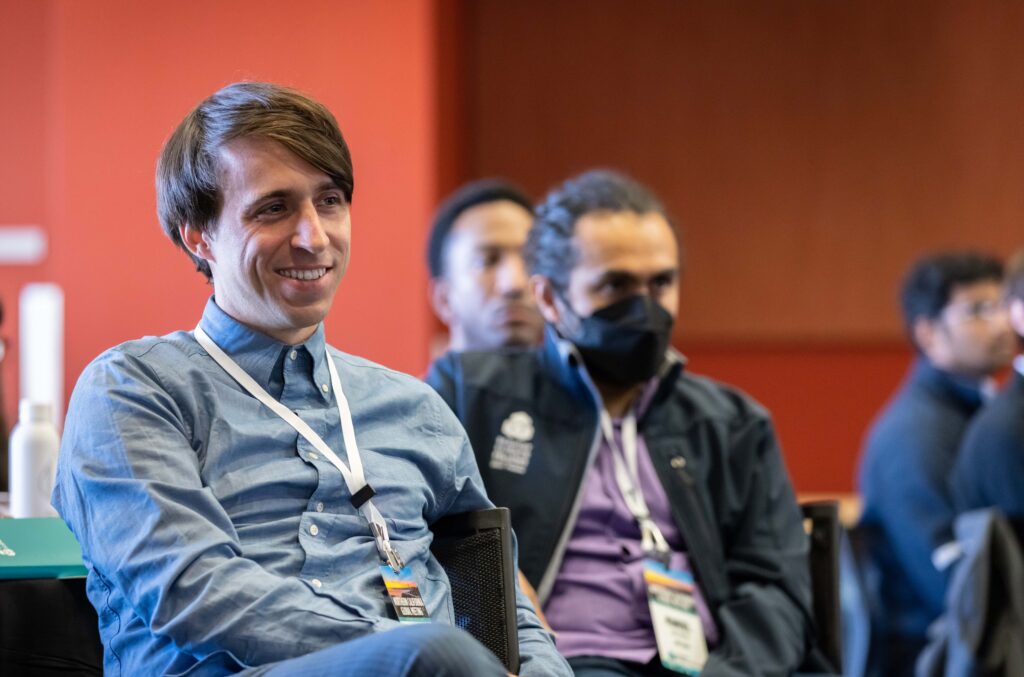
Dr. Wiriya Thongsomboon reflects on how the Cambridge Global Meeting has opened her mind to the challenges and solutions of interdisciplinary science.
Even though it has been several months since our Global Meeting in Cambridge MA, I still vividly remember the video presentation showing a rock climber, Jim Ewing, with his prosthetic leg climbing the cliff on the Cayman Islands.
Along with other Schmidt Science Fellows, I had the great opportunity to visit the Biomechatronics Group at MIT Media Lab where they had developed novel technologies that neurologically merged machine with human body to enable people with amputations to control their prosthetic limbs with their brains. Jim Ewing, who lost his leg from a climbing accident, became the first test subject for their technologies. Visiting the lab, we got to see several prosthetic prototypes, walk on the platform used for testing the prototypes, and learn about the research that allowed Jim Ewing to climb again. It was mind-blowing.
This was just one part of our packed schedule at the Global Meeting. Throughout the week, we had the opportunity to explore and understand how engineers and scientists from various disciplines work together to tackle challenging and important problems. We met with researchers from MIT, Harvard, and the Broad Institute where we listened to their exciting research journeys at the frontier of technological development. I found this eye-opening and inspiring to learn about the groundbreaking prosthetic technologies that merge body and machine, the TESS satellite project searching for exoplanets, collaborative robots that can understand and work alongside humans, a patient monitoring system harnessing artificial intelligence and WiFi, the Human Genome Project, the Human Cell Atlas, and many other projects.
I cannot help but admire human capabilities and ponder on what it takes to make scientific and technological breakthroughs. I believe that interdisciplinary research practice is key to these breakthroughs.
Interdisciplinary research is not a new concept—it has been encouraged and fostered in many universities and research institutions. Integrating skills and expertise from different fields, researchers can tackle topics beyond their disciplines and achieve more. Navigating the interdisciplinary path however is not simple. From conversations with interdisciplinary researchers at the Global Meeting, I am now aware of several challenges and how best to tackle them.
Continuous courage
It requires individual courage to cross the disciplinary boundary and willpower to stay outside our comfort zone. It might also take time for our work to be recognized by experts in new fields. Proposing unconventional ideas different from the established discipline will be challenging. Even Bob Langer, one of the most successful engineers and pioneers in biomedical research, had to face a series of rejections when he first started working on drug delivery systems. Passion, perseverance, and optimism are necessary.
Interdisciplinary language
In order to work with people from different disciplines, we need to be able to speak and understand new languages. Eric Lander, the founding director of the Broad Institute suggested that scientists should learn to speak many languages—the languages of different disciplines. He himself is a geneticist, a molecular biologist, and a mathematician. Effective communication is important for collaborative research. It is therefore powerful to understand and be able to speak the language of other disciplines.
Establishing a new norm
Evaluation processes in academia, for example admissions and promotions, are still based on a conventional standard established in each discipline. This practice can discourage researchers from transcending to other disciplines and from conducting research projects that do not fit with traditional topics in their home discipline. To thrive as an interdisciplinary researcher, one will need to be able to communicate and work well with people from different disciplines whilst excelling in his or her current field.
Conducting research in an interdisciplinary way seems challenging, however, speaking to researchers at our Global Meeting who have successfully navigated their interdisciplinary paths has truly inspired me. It must have been even more challenging to practice interdisciplinary research when the concept was not common. Nowadays funding institutions and universities are supporting interdisciplinary research more and many interdisciplinary training programs have been fostered. I am grateful for those interdisciplinary researchers who have paved the way and to the Schmidt Science Fellows program for now supporting me to forge my own path.
I hope to see structural changes that will make academia more compatible with interdisciplinary practice. One day research without disciplinary boundaries will be a norm and I wonder what someone will be able to accomplish when that happens. It is beyond my imagination.
The world has many lenses to see it through. It is great to own many lenses – Eric Lander


